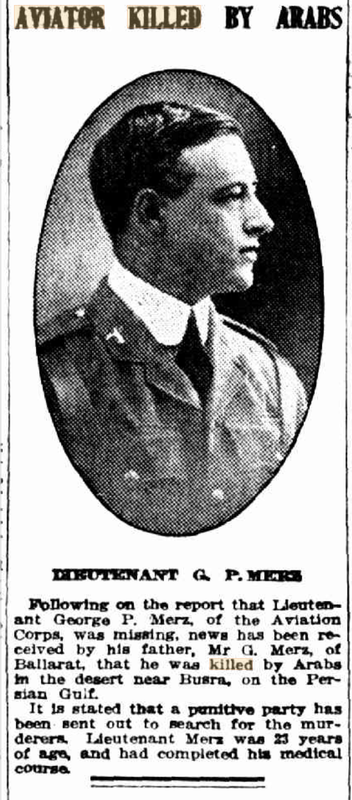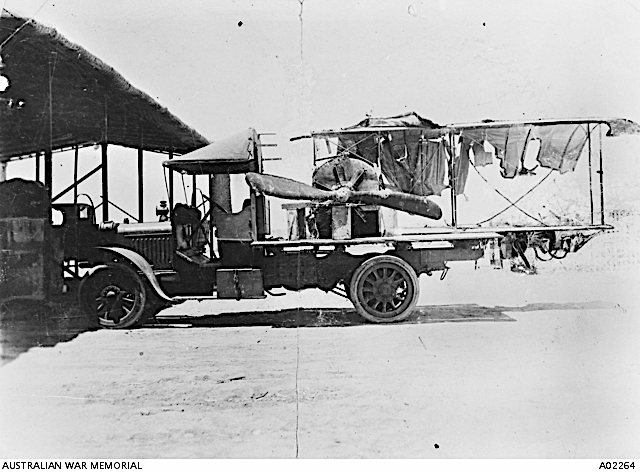Australia's 'First Air War Casualty'Daylight had yet to arrive when their Caudron took wing from it's makeshift air base at newly occupied Nasiriyeh. They were En route to Basra when engine trouble caused them to land in hostile terrain. While making repairs they were set upon by a band of Bedouin. Armed only with pistols, the two Australian airmen fled for five miles in a running gunfight until Lieutenant W Burn, wounded, could not continue. The pilot, Lieutenant George Pinnock Merz, who was also a medic, chose to stay by his fellow airman's side. They were never seen again, though their troublesome Caudron, now shredded by knives, was salvaged.
"
‘The loss of Burn and Merz was a severe blow. Both were capable pilots, and, as a medical man, Merz had rendered conspicuous service in the understaffed hospital at Nasiriyeh on the night before his last flight.’ The service of both officers is commemorated in the form of the annual rugby match between the RNAF and the RAAF vying for the Burn-Merz Shield established in their memory in 2003. Merz is also remembered as Merz Road adjacent to the Officers’ Mess at RAAF Base Williams, Point Cook; the annual ‘Lieutenant George P Merz Memorial Prize’ awarded to the dux of the Aviation Medical Officer course at the RAAF Institute of Aviation Medicine and the George Merz Memorial Lecture sponsored by the Friends of the RAAF Museum ‘dedicated to the first Australian airman to die in combat.’ He was also Mentioned in a Despatch, dated 1 January 1916 ‘for gallant and distinguished service in the Field.’" (via mhhv.org.au/)
(from the Melbourne Herald, 21 August 1915):


(image via awm,gov.au)